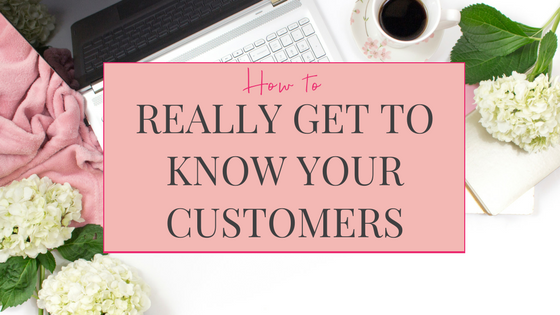Step 6: Attracting an Audience with Branded Content
 I’m Jen Hacker and welcome back to Toast Meets Jam where you can learn all about how to build your brand! You’ll find practical tips as well as advice from female founders who have built successful brands of their own. And very cool for you, you’re catching me in the middle of a special series. This week I’m diving into brand content. I’ve partnered with Fiverr on to show you guys how to build a brand from scratch in just 8 weeks. Bananas.
I’m Jen Hacker and welcome back to Toast Meets Jam where you can learn all about how to build your brand! You’ll find practical tips as well as advice from female founders who have built successful brands of their own. And very cool for you, you’re catching me in the middle of a special series. This week I’m diving into brand content. I’ve partnered with Fiverr on to show you guys how to build a brand from scratch in just 8 weeks. Bananas.
Or in this case slippers.

That’s right, I’m taking these beautiful fluffies and building up a brand around them. Last week we talked about how we bring our brand to life online and the importance of creating a consistent experience for our customers. If you missed that episode you can click here to go check it out.
Once we have our website and social media channels set up, it’s time to start to think about how we use these to attract and audience and connect with our customers.
Why is original branded content SO important??
Now if you’ve spent even a little bit of time studying marketing, branding, or even blogging, then you’ve likely hear a lot of talk about the need to create original content. And there’s good reason why.
According to some studies, ⅔ of millennials feel that online content drives their loyalty to a brand and the more frequent your interactions the more loyalty you gain.“
Creating original brand content helps your brand extend beyond your products. It gives you a way to show your customers that you’re not all about business. That you actually care about them and you’re not just in it for the sale.
Bearing that in mind, before you get started creating your brand content your first step should be spending time to understand what your customers are interested in. Good news! You should have this in hand from Episode 1 where we did our market research and created our personas.
From there it’s about picking the right channels and messages for each. The three main channels you’ll want to consider are your brand’s blog, social media, and email. Depending on who your target customer is, it might make more sense for you to connect with them on Twitter over Instagram or vice versa. Likewise, a blog may be your best choice or Youtube might be the preferred destination. The purpose of starting our brand building process with defining our who is so that we are better able to make smart informed decisions about your perfect mix.
When you’ve decided where you want to connect with your customers the next step is to map out what you want to say and when you want to say it. We call this an editorial calendar. It’s exactly what is sounds like, a calendar that list what content you are going to post each day and on which of your channels.
It’s okay to ask for help.
 This is an amazing project to turn to Fiverr for help with. They have content experts who can help you create your master plan. Here’s a look at the editorial calendar I had created for my new brand. You can see how there are different tabs for each channel and how they’ve really clearly laid out what type of content I should be creating.
This is an amazing project to turn to Fiverr for help with. They have content experts who can help you create your master plan. Here’s a look at the editorial calendar I had created for my new brand. You can see how there are different tabs for each channel and how they’ve really clearly laid out what type of content I should be creating.
Having this tool allows us to move onto the next step which is actually creating that brand content. Now I know that this part feel pretty daunting to a lot of people. Most of us don’t consider ourselves designers, copywriters, or photographers by trade. And the task of writing blogs and coming up with awesome images for our social media posts can feel out of our scope of expertise.
This actually presents another great use case for where Fiverr experts can really lend a hand. Getting creative help in fact is the number one reason I go back to them over and over again. On their marketplace you find skilled copy writers, graphic designers, and social media experts.
Say it again for those in the back!
You’ve heard me preach it before but I’ll say it again. Great branding comes down to consistency. When you start to post to a channel, whether that’s your blog or Instagram, you need to consistently show up. Remember also how we talked about getting to know your customers as well as your BFF. Well, how would your friends feel if you just stopped showing up. Probably not so great, right? Well the same is true for your customers. If you want to build a strong relationship with them, you’ve got to stay present in their lives.
If you’re a team of one, or a few, with a lot on your plate this is where the work can start to feel overwhelming. Don’t be afraid to look for help. If you’ve gone through the steps to establish your brand equity and define your brand identity then whomever is working with you will have clear guidelines on the look and tone of your brand. When you visit my new brand’s website and social media you’ll see content that has been created by my extended Fiverr team. And, you’ll notice how it all feels, (what’s our key word, again?) consistent!
Services Used + Cost
I Will Create An 8 Week Social Media Marketing Schedule
 – Basic, $5
– Basic, $5
– Medium, $100 (My choice)
– Premium, $300
I Will Give You 30 Social Media And Blog Post Ideas
 – Basic, $5
– Basic, $5
– Medium, $10
– Premium, $30 (My choice)
I Will Be Your Professional Social Media Manager
– Basic, $75
– Medium, $100 (My choice)
– Premium, $150
I Will Write Razor Sharp, Witty Content For Your Website
– Basic, $175 (My choice)
– Medium, $350
– Premium, $500
Total: $405
Total for Week 1 – Week 6: $2,660
Ok, so you’ve got your homework for the week. Start to get your the plan for your brand content in order.
Next week we’ll be talking about how we start to grow awareness of our brand through press, partnerships, and paid media. I’ll see you then and in the meantime, if you like this video be sure to give it a thumbs up and don’t forget to subscribe to stay up to date on our last steps!
Cheers!
PS: Want to learn more about why what your posting to your social media, blog, and email list is so important? This post is for you.
If you missed week 1, week 2, week 3, week 4, or week 5 of this series, check them out.














